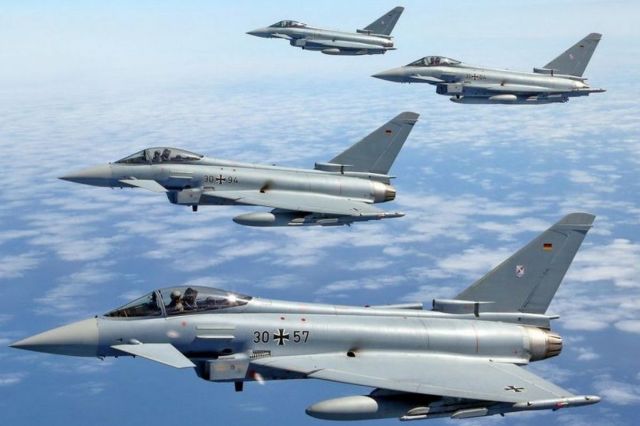All-weather multi-purpose combat aircraft " Eurofighter Typhoon "(Eurofighter Typhoon) is designed to gain air superiority, control of the airspace and the interception of enemy aircraft. Its capabilities also include the suppression and destruction of air defense facilities, direct air support, attacking naval targets, participating in a strategic air strike, and conducting reconnaissance.
The aircraft is produced by the European weapons consortium "Eurofighter Jagdflugzeug GmbH" (Eurofighter Jagdflugzeug GmbH) with headquarters in the town of Hallbergmoos (Hallbergmoos) near Munich (Germany). The company was created with the participation of four companies: Airbus Defens and Space GmbH (Germany, 33%), Airbus Defens and Space S. A. (Spain, 13%), BAE Systems (UK, 33%) and Leonardo S. p.A (Italy, 21%).
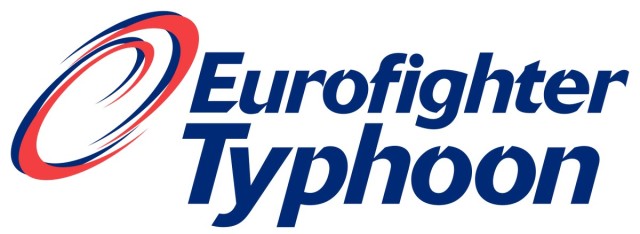
"Jagdflugzeug Eurofighter GmbH," the emblem of the company
The first flight of the Eurofighter Typhoon was made on March 27, 1994. Currently, the aircraft is in service with the Air Forces of nine countries around the world. According to open sources, as of August 31, 2018, 623 aircraft were ordered for the industry, and by November 2018, the manufacturer had already delivered 551 aircraft to customers.
During the production of the model was subjected to constant modification. Each of the modifications is referred to as a "tranche" with the corresponding serial number. The first deliveries received the designation "tranche 1". Currently, customers receive "tranche 3".
In the composition of The German Air Force has four Eurofighter Typhoon tactical aircraft squadrons in service. As of mid-2018, the Bundeswehr Air Force had 133 aircraft of this model in its composition and expected to deliver another 143 fighters.
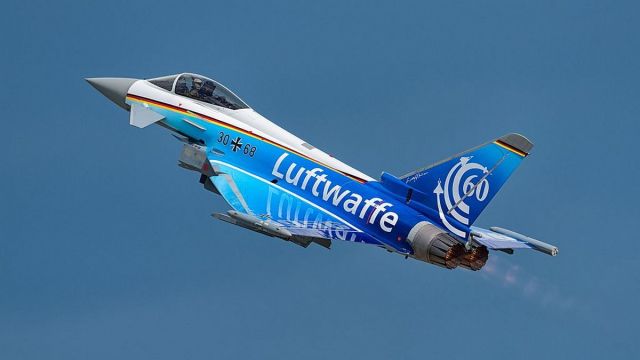
Eurofighter Typhoon-flying in celebration of 60 years of the Luftwaffe
Eurofighter Typhoon: combat capabilities
According to European experts, the aircraft makes it relatively easy to implement its future missions, thanks to a flexible design. This flexibility is based on advanced technologies in the field of avionics and the integration of various types of weapons. As a result, the "Eurofighter" is able not only to perform different roles, but also to change them in the course of a single mission. Moreover, the transition between the use of the class "air-to-air" and "air-to-ground" is possible. Using a single aircraft for a wide range of applications reduces costs, increases efficiency, and facilitates interaction between allied forces.
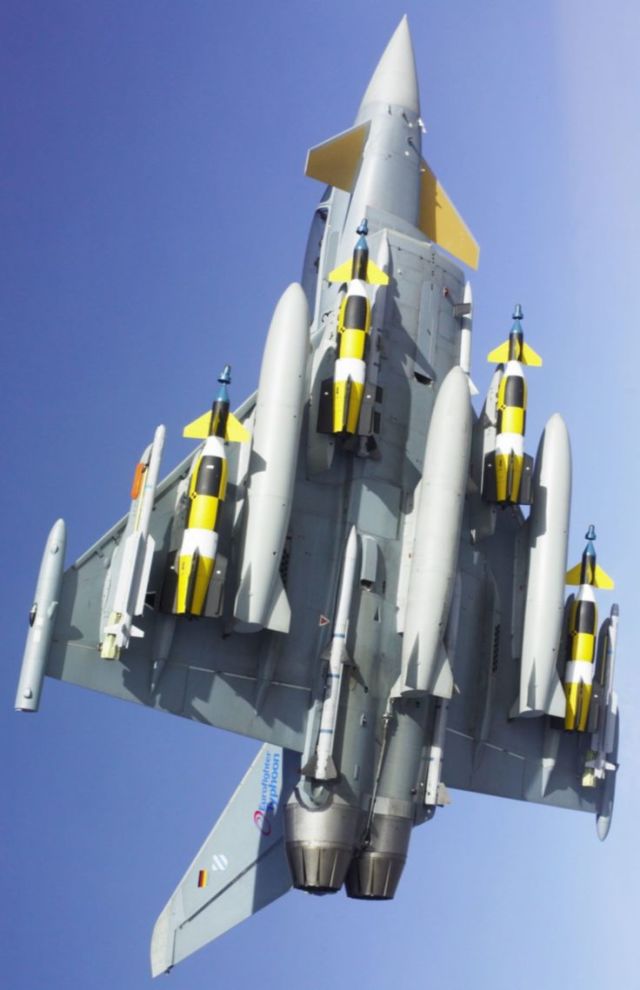
"Eurofighter" with ammunition on the external suspension
According to Western estimates, when performing the role of a fighter providing air superiority, the Eurofighter fully uses its high maneuverability and sufficient specific thrust. It is capable of simultaneously hitting several enemy aircraft both within and outside the borders of the visible area.
In addition to the rigidly mounted 27 mm aircraft gun, the Eurofighter Typhoon has 13 external suspension points that secure a wide range of weapons and additional fuel tanks. This arsenal contributes to the successful use of the aircraft against various ground targets.
Construction
The Eurofighter Typhoon is a jet aircraft with two engines, a delta wing and a front horizontal tail (PGO). The lightweight structure is 82% composite (70% carbon fiber and 12% fiberglass).
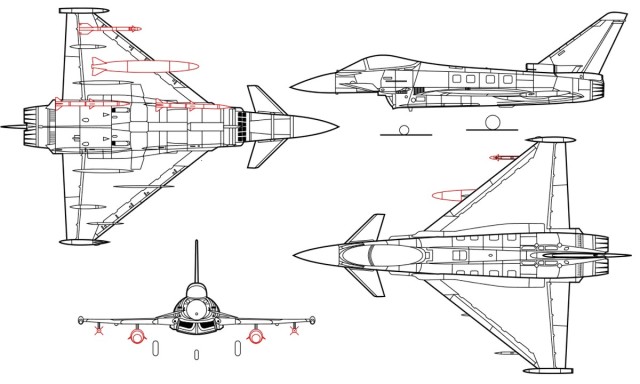
Aircraft projections
The wings and the outer skin of the fuselage is made of carbon fiber. The PGO, ailerons and engine parts, as well as the wing junctions, are made of titanium alloy. The air intakes, slats, internal fuselage structure and the leading edge of the vertical stabilizer are made of high-strength aluminum alloy. The edge of the cab is made of magnesium alloy. The fairings are mainly made of fiberglass. To protect against electromagnetic interference, spurious radiation, EMR, high-power microwave and lightning, the airframe is surrounded by a conductive grid.
The Eurofighter Typhoon has two fuel tanks in the wing and three tanks behind the cabin. In order to balance the machine in flight, fuel is continuously pumped between the tanks. The filling of the tanks is controlled by pressure sensors. The aircraft can carry out refueling in the air. A folding refueling probe is installed to the right in front of the cab.
Refueling probe
To reduce the length of the run after landing, a brake screen is raised in front of the vertical stabilizer of the aircraft. This device allows the Typhoon to land on advanced bases, short runways, on highways and auxiliary airfields. A hook is installed between the engines of the machine, which is used only in case of an emergency.
Engine
The Eurofighter Typhoon engine is a two-shaft engine with a two-circuit ratio of 0.4:1. The low two-circuit ratio is chosen because of the high dry thrust and its good efficiency in supersonic flight mode. The engine allows the Typhoon to maintain supersonic speed for a long time without using an afterburner, that is, to fly in the "supercruise" mode (Supercruise – supersonic cruising speed of flight).
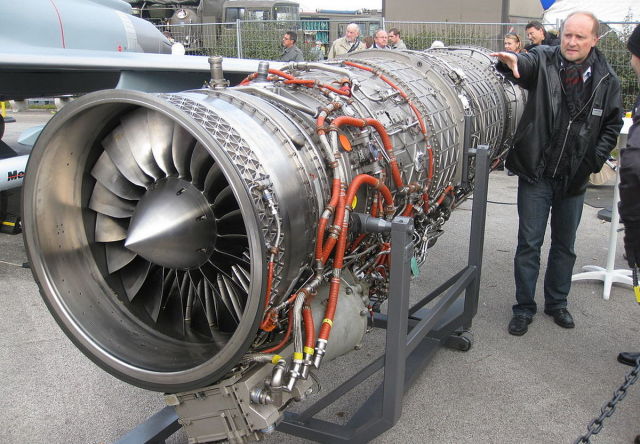
EJ200 Engine
Compared to the engine of the Tornado fighter (Turbo-Union RB199), the EJ200 model has 37% fewer parts (1800 instead of 2845) and develops 50% more thrust at the same size. High-pressure and low-pressure compressors are manufactured using Blisk technology (the compressor discs and blades are made as a single unit, which reduces weight). The EJ200 blades are made of titanium alloy hollow and are more than twice the size of the Turbo Union RB199 blades.
In the Eurofighter Typhoon engine, the air is compressed by a low-pressure compressor in three stages to a pressure ratio of 4.2:1. A high-pressure compressor with a 3D blade grid and five stages creates a pressure of 6.2:1. According to Western sources, this is one of the best indicators in the world. The two compressors rotate in opposite directions, creating a total pressure ratio of up to 26:1.
In the annular combustion chamber, air and fuel are burned together. The temperature at the turbine inlet is about 1800° Kelvin. The afterburner (afterburner) is followed by an adjustable convergent-divergent nozzle without a controlled thrust vector. The thrust-to-weight ratio of the EJ200 is 9.5:1 with an engine weight of 1035 kg. It takes less than 45 minutes for four people to replace the engine.
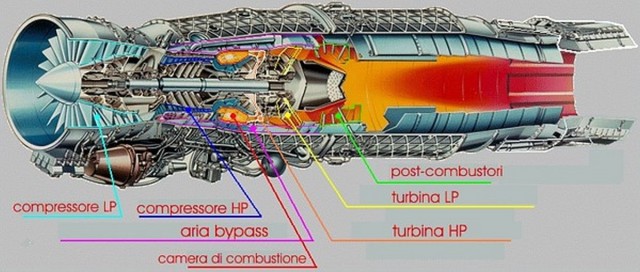
Structure of the Eurofighter Typhoon engine"
Under normal conditions, the Digital Engine Control Unit (DECU ) optimizes the engine for minimal maintenance and maximum service life. With this setup, the EJ200 provides a dry thrust of 60 kN and 90 kN on the afterburner. In the case of combat operations, the so-called "battle settings" (War Setting) can be used. They allow you to increase productivity, but reduce the service life and increase the maintenance period of the engine. However, in this case, the engine develops a dry thrust of 69 kN and 95 kN, followed by afterburning. In emergency mode, the EJ200 can provide 102 kN of thrust for a few seconds.
Currently, work is underway on a promising engine with a 3D control system for the thrust vector and its deflection angle of about 23°. In addition, the converging and diverging parts of the nozzle can be controlled independently of each other. This will increase the useful thrust in the "super cruise" flight mode by 7%, thanks to the flow optimization.
Aerodynamics
When building the aircraft, the project laid down its maximum possible instability, so aerodynamics became the main and most difficult task in the development of the project.
In unstable combat aircraft with PGO, nonlinear aerodynamic effects are unavoidable. The designers were required to guarantee the stability of the aircraft's flight during maneuvering and to ensure that the nose of the machine could be brought back down at high angles of attack.
According to the publications, the Eurofighter Typhoon flight control system limits the maximum overload value for subsonic flight to 15g. At supersonic speeds in the range of Mach 1.2 – 1.6, the fighter is able to maneuver with an overload of up to 9 g. In addition, the speed of Mach 1.6 is considered the maximum permissible for maneuvering, for which the aircraft was designed. At the same time, it remains possible to fly at a higher speed.
Low-visibility technologies ("stealth")
The Eurofighter Typhoon is not an invisible aircraft, but it is optimized in this direction for a number of design features. One of the goals of the designers was a four-fold reduction in the Radarquerschnitt (RCS) profile of the aircraft from the front in comparison with the Tornado fighter.
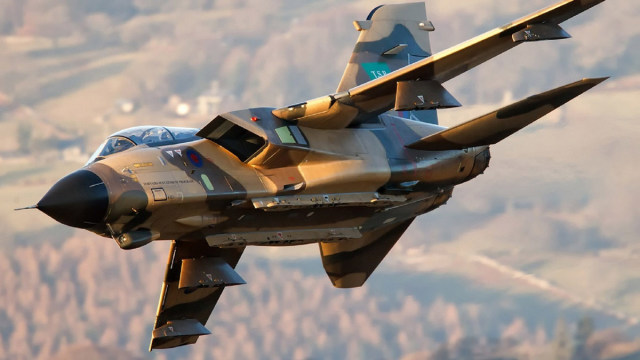
Tornado fighter"
According to the publications, engineers have resorted to a number of measures in this regard. So, the air intakes of the aircraft are raised up, and also have an S-shaped entrance, which prevents the line of sight of the front blades of the engine compressor. The air-to-air missiles are half-buried in the middle part of the vehicle's hull. All surfaces visible from the front are covered with a radio-absorbing material (radarabsorbierendem Material, RAM). This affected the leading edges of the PGO, the carrier wing and the vertical stabilizer, the air intakes and the leading edge of the flaps.
The radar fairing is specially designed by BAE Systems and hasa Frequency Selective Surface ( FSS). The surface guarantees its transparency for its own radar and the reflection or absorption of radiation from other radars. The cockpit glazing is covered with a thin layer that is impervious to electromagnetic waves and also contributes to the radar camouflage of the aircraft.

Bottom view. Sunken missiles in the middle of the fuselage
According to the RAF, the actual value of the frontal RCS is secret, but it is believed to be better than the targets. In particular, according to the Japanese aviation magazine "J-WINGS" from August 2010, the cross-section of the Eurofighter Typhoon radar is 0.05-0.1 sq. m. Another publication, the Journal of Electronic Defense from 2005, reported that the comparative value of the RCS of the Typhoon was 0.13% of the radar cross-section of the Su-27/30/35 and about 0.2% of the similar parameter of the MiG-29.
Cab and controls
"Eurofighter Typhoon" is controlled by a single pilot, located in the cockpit.
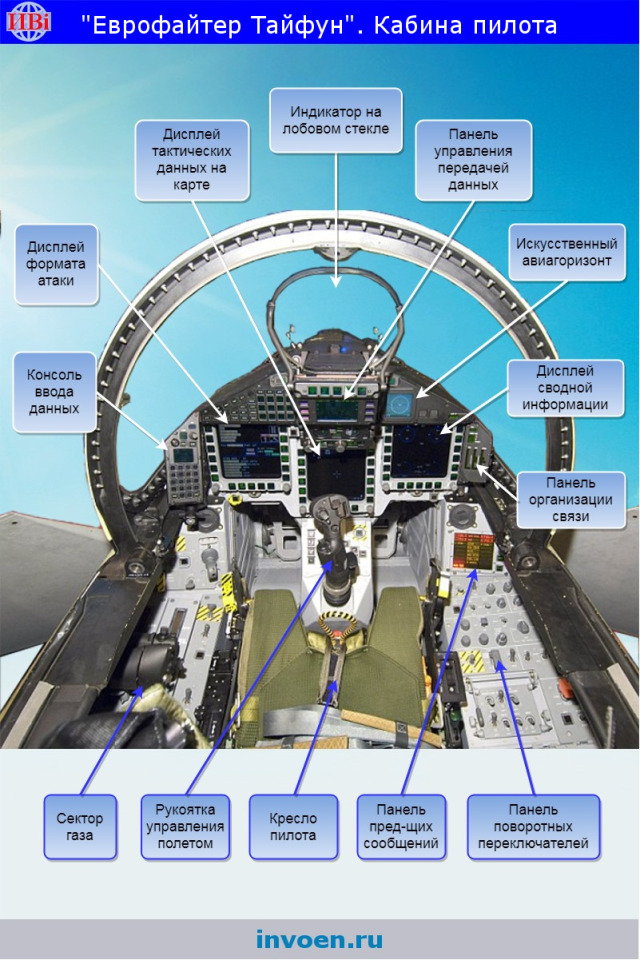
General view of the Eurofighter Typhoon cabin"
The pilot's workplace is dominated by the indicator on the windshield (HUD, Head-up-Display). Below it is a basic Data Link Control Panel (DLCP), and below it are three multi-function Head Down Displays ( MHDD). On the left side there is another console for entering and changing data, on the right side there is a display for organizing communication.
Flight information, sensor data, tactical data, and system information are provided to the pilot on three 159×159 mm AMLCD multifunction screens with a resolution of 1024×1024 pixels. The screens automatically adjust to the prevailing lighting conditions in the cabin using a photocell. The screens are controlled by 17 buttons, Direct Voice Input (DVI), or a cursor. To move the cursor, use the XY controller? which is located on the throttle lever and is adjusted by the index finger of the left hand. On-screen buttons do not have a permanent label, but can be any character as needed.
Usually, before starting, the standard setting for each monitor is determined. Next, Typhoon automatically selects the appropriate display depending on the situation and mission status. Usually, the center displays tactical data on the map (Pilot-Awareness-Format, RA). The attack format appears on the left, where only the relevant tactical data is displayed. The "picture" of the right display is selected depending on the situation: the range-altitude indicator (RHI-Scope), target tracking, information from the self-defense system (Defense Aids Sub System, DASS), weapons, fuel, etc.In the attack and PA formats, the overall picture of the situation is always displayed.
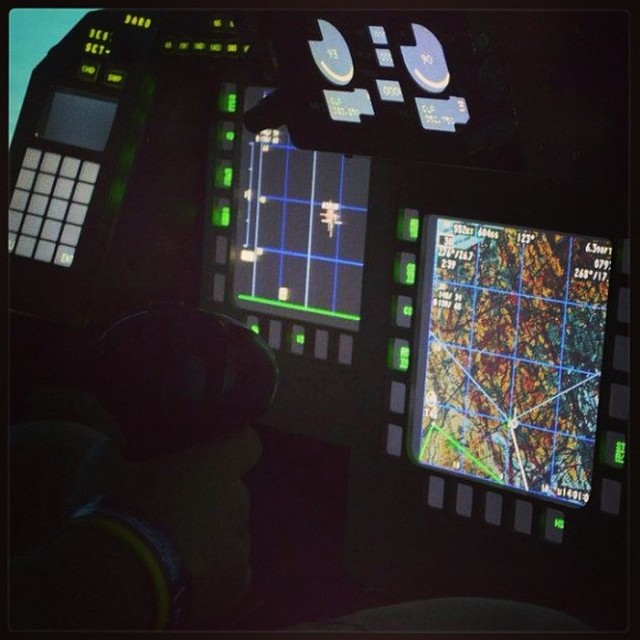
RA format (map) on the middle monitor of the cab
In the upper part of the cabin, to the right of the DLCP, there is an artificial horizon, to the left of which there are additional buttons. Next to the right knee is a panel of warning messages. The rotary switches on the cantilever brackets on the left and right are necessary for raising and lowering the aircraft systems and are not used in emergency situations and in normal flight.
Pilot's equipment
The pilot of the Eurofighter Typhoon sits in a Martin-Baker Mk-16-EF ejection seat with zero potential. For the pilot to breathe, the air from the engine air intakes is passed through a molecular sieve made of zeolites and is enriched with up to 95% oxygen.
The pilot's equipment includes an anti-overload suit and a specially designed "Striker" helmet. In its modern form, the helmet has been supplied to the troops since the beginning of 2011. It weighs 1.9 kg and costs $ 400,100 apiece. The visor of the helmet is equipped with a protective coating against laser and other types of radiation. It also provides a set level of ballistic protection against shrapnel.
The helmet display consists of binocular screens with a cathode ray tube and is connected to the Head Tracking System (HTS). The Helmet Mounted Symbol System (HMSS ) displays the position of aircraft, guided missiles, and other environmental features on the helmet visor based on a combined picture of the situation. Thus, the pilot can see the targets "through" his own plane, connect them, and then use voice input to assign priorities to them and point guided weapons at them. The principle of operation is indicated by the manufacturer as "point and click".
The pilot controls the aircraft by operating the control stick located in the center of the cabin and the throttle lever on the left side. Both elements have 12 switches each.
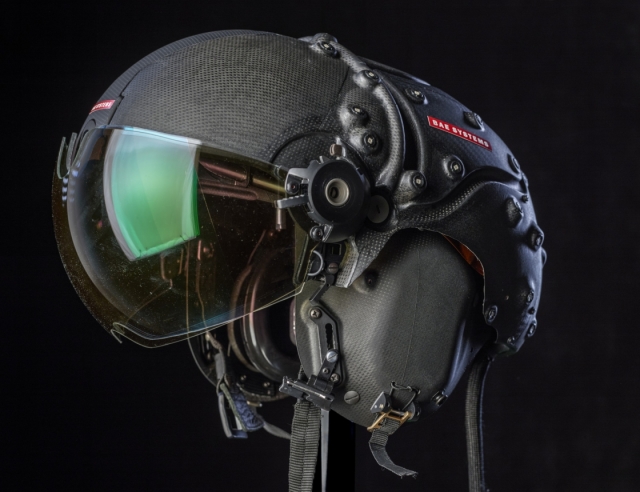
Striker Helmet
Flight Control
The aircraft is controlled by a digital four-fold redundant electric remote control system, which uses sensors to receive the pilot's signals on the control stick. As a result, the pilot does not directly control the rudders. It determines the required flight parameters. Then, the flight control system computers calculate the optimal positions of the rudders and deploy them accordingly, depending on their current position, speed, air pressure and temperature.
Four existing computers process the input data and transmit control signals to the actuators (wings, flaps, landing gear, etc.). For this purpose, the Eurofighter Typhoon design uses two redundant hydraulic systems operating at a pressure of 275 bar. At the same time, turns are generated by the elevons in the rear part of the wing, and the rocking motion, or nods, are generated by the PGO and elevons. A large air brake is additionally placed behind the cab canopy.
Flight Control Computers (FCC) are interconnected and connected to separate sensors and displays. The Flight Control System (FCS) guarantees the so-called "safe piloting" (carefree handling, CFH), so that the pilot can not overload his car with flight maneuvers and damage the structure. FCS will allow and execute only those maneuvers that the Eurofighter can withstand in the appropriate situation.
The piloting of the aircraft is highly automated. When bombing, for example, the fire button is constantly pressed, the bombs are automatically dropped at the right moment. Automation is multi-layered. Depending on the experience, pilots can choose either a high degree to better focus on tactics and flight, or to allow themselves more interaction with the system to optimize weapon systems to suit a specific tactical scenario.
As a rule, the aircraft is controlled by the VTAS principle (Voice, Throttle & Stick – voice, hands on the control levers). The most frequent commands can be selected without taking your hands off the control levers (HOTAS principle) or using voice input. Voice control contains about 200 words and is limited to the control of 26 non-critical systems that are not related to flight control or the use of weapons.
By materials http://www.wikiwand.com
